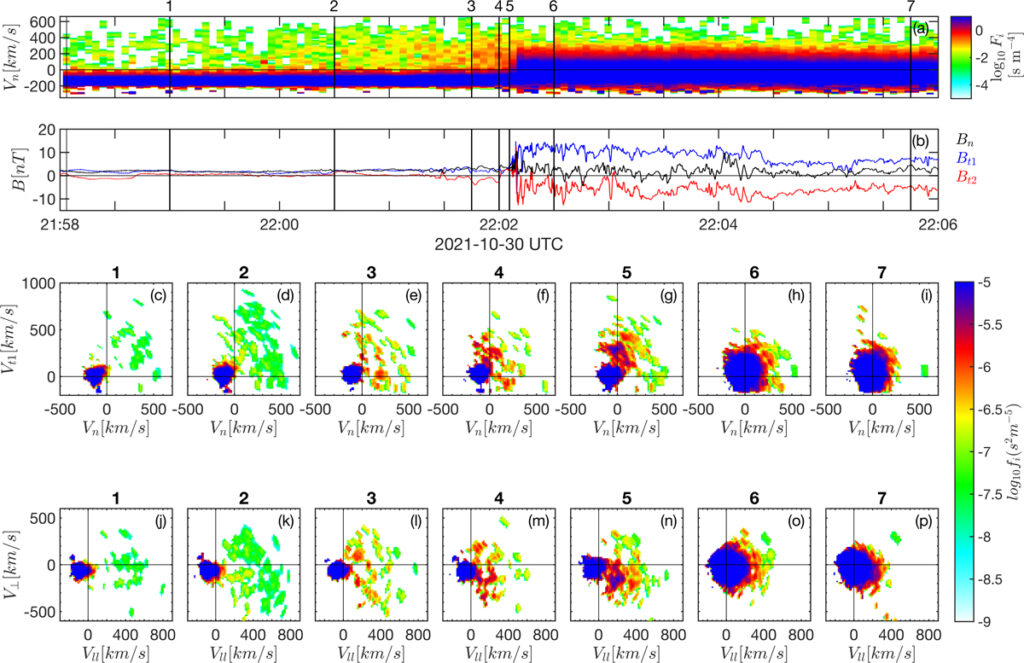Context. Solar Orbiter, a mission developed by the European Space Agency, explores in situ plasma across the inner heliosphere while providing remote-sensing observations of the Sun. The mission aims to study the solar wind, but also transient structures such as interplanetary coronal mass ejections and stream interaction regions. These structures often contain a leading shock wave that can differ from other plasma shock waves, such as those around planets. Importantly, the Mach number of these interplanetary shocks is typically low (1–3) compared to planetary bow shocks and most astrophysical shocks. However, our shock survey revealed that on 30 October 2021, Solar Orbiter measured a shock with an Alfvén Mach number above 6, which can be considered high in this context.
Aims. Our study examines particle observations for the 30 October 2021 shock. The particles provide clear evidence of ion reflection up to several minutes upstream of the shock. Additionally, the magnetic and electric field observations contain complex electromagnetic structures near the shock, and we aim to investigate how they are connected to ion dynamics. The main goal of this study is to advance our understanding of the complex coupling between particles and the shock structure in high Mach number regimes of interplanetary shocks.
Methods. We used observations of magnetic and electric fields, probe-spacecraft potential, and thermal and energetic particles to characterize the structure of the shock front and particle dynamics. Furthermore, ion velocity distribution functions were used to study reflected ions and their coupling to the shock. To determine shock parameters and study waves, we used several methods, including cold plasma theory, singular-value decomposition, minimum variance analysis, and shock Rankine-Hugoniot relations. To support the analysis and interpretation of the experimental data, test-particle analysis, and hybrid particle in-cell simulations were used.
Results. The ion velocity distribution functions show clear evidence of particle reflection in the form of backstreaming ions several minutes upstream. The shock structure has complex features at the ramp and whistler precursors. The backstreaming ions may be modulated by the complex shock structure, and the whistler waves are likely driven by gyrating ions in the foot. Supra-thermal ions up to 20 keV were observed, but shock-accelerated particles with energies above this were not.

 plane (panels c to i) and
plane (panels c to i) and  at various locations from upstream to downstream of the shock front.
at various locations from upstream to downstream of the shock front.  refers to Bu. An ion population (in all the VDFs) that is separate from the solar wind beam is noticeable.
refers to Bu. An ion population (in all the VDFs) that is separate from the solar wind beam is noticeable.Full Article:
Dimmock, A. P. (SHARP), Gedalin, M. (SHARP), Lalti, A. (SHARP), Trotta, D., Khotyaintsev, Yu. V. (SHARP), Graham, D. B. (SHARP), Johlander, A., Vainio, R., Blanco-Cano, X., Kajdič, P., Owen, C. J. and Wimmer-Schweingruber, R. F. (2023). Backstreaming ions at a high Mach number interplanetary shock – Solar Orbiter measurements during the nominal mission phase. Astronomy and Astrophysics, 679, doi: 10.1051/0004-6361/202347006
License: CC BY 4.0





